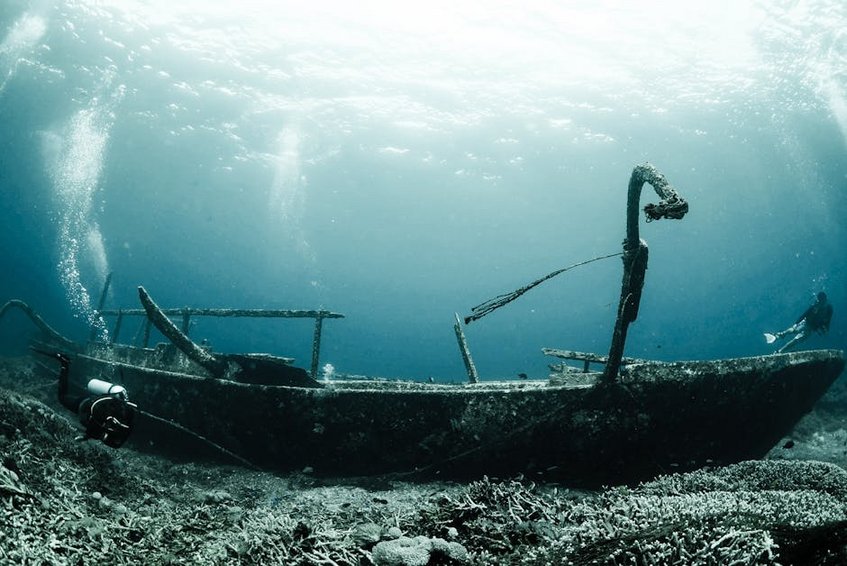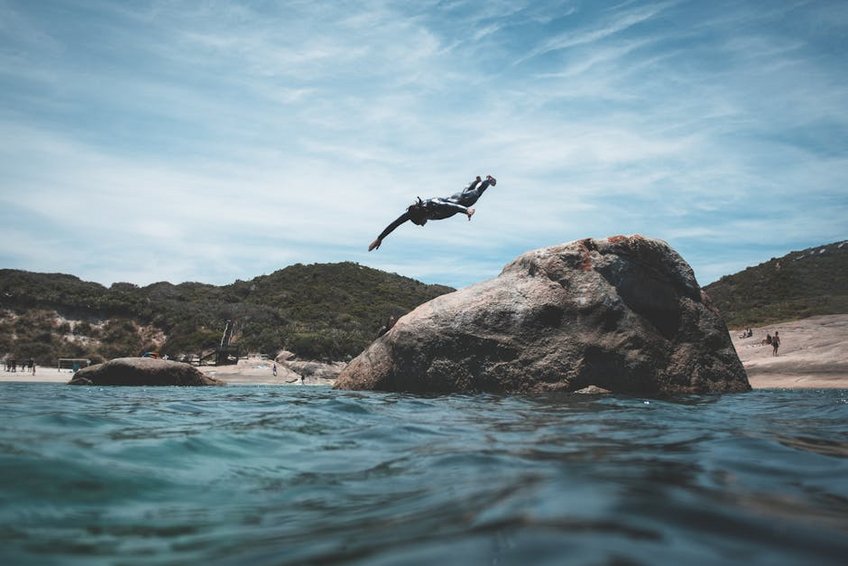Micronesia Chuuk Lagoon Wreck Diving: The Ultimate Underwater Adventure
Imagine descending into the crystal-clear waters of Micronesia Chuuk Lagoon wreck diving, where history and marine life intertwine in an unforgettable underwater museum. This remote Pacific paradise offers some of the world’s most spectacular wreck diving experiences, with over 60 Japanese ships and aircraft resting on the lagoon floor since World War II. You’ll explore intact vessels like the Fujikawa Maru, surrounded by colorful coral gardens and schools of tropical fish. The sheer scale and preservation of these wrecks make Chuuk Lagoon a bucket-list destination for divers of all levels. From the eerie engine rooms to decks adorned with soft corals, every dive reveals new wonders. Planning your Micronesia Chuuk Lagoon wreck diving adventure requires careful preparation, but the rewards are immense. You’ll need to consider seasonality, equipment, and travel logistics to fully enjoy this unique destination. The lagoon’s warm waters and excellent visibility create ideal conditions for underwater photography and exploration. Whether you’re a history buff or diving enthusiast, this experience will leave you in awe of nature’s reclamation and human history.
Micronesia Chuuk Lagoon Wreck Diving – Essential Information
Understanding the basics of Micronesia Chuuk Lagoon wreck diving helps you prepare for this extraordinary journey. Chuuk Lagoon, part of the Federated States of Micronesia, is a vast atoll in the western Pacific Ocean. The wrecks date back to Operation Hailstone in 1944, when American forces decimated the Japanese fleet. Today, these sites are protected and managed for sustainable tourism. You’ll find wrecks at various depths, from shallow reefs suitable for beginners to deep technical dives for experts. The lagoon’s marine ecosystem has flourished around the wrecks, creating artificial reefs teeming with biodiversity. Local dive operators provide guided tours, ensuring safety and historical context. Water temperatures range from 82-86°F (28-30°C) year-round, allowing comfortable diving in lightweight wetsuits. Visibility often exceeds 100 feet (30 meters), offering stunning views of the wrecks and marine life. You should have at least an Open Water certification, though advanced certifications are recommended for deeper sites. The cultural significance of these wrecks is respected by locals and visitors alike.
What is Chuuk Lagoon Wreck Diving?
- Chuuk Lagoon wreck diving involves exploring sunken World War II vessels and aircraft in a protected marine environment, offering a unique blend of history and adventure.
- The wrecks include cargo ships, submarines, and fighter planes, many with intact artifacts like trucks, weapons, and personal items, providing a haunting glimpse into the past.
- Dive sites range from 30 to 130 feet (9 to 40 meters) deep, with options for wreck penetration, external surveys, and night dives, catering to different skill levels and interests.
- Budget options: Stay in guesthouses or homestays for $50-80 per night, with basic dive packages starting at $100-150 per day including two dives; total trip cost for a week can be under $1,500 per person.
- Mid-range options: Choose dive resorts like Blue Lagoon Resort for $150-250 per night, with comprehensive packages at $200-300 daily covering meals and dives; expect to spend $2,500-3,500 for a week-long adventure.
- Luxury options: Opt for all-inclusive liveaboard boats or high-end resorts at $300-500 per night, with premium dive services up to $400 daily; a week can cost $4,000-6,000 including extras like private guides and photography.
- Official Micronesia Tourism Authority
- Wikipedia on Chuuk Lagoon History
Historical Background of the Wrecks
The historical context of Chuuk Lagoon’s wrecks dates to February 1944, when the U.S. launched a surprise attack on the Japanese naval base. Operation Hailstone resulted in the sinking of numerous ships and aircraft, creating what’s now called the “Ghost Fleet of Chuuk Lagoon.” These wrecks remained largely untouched until the 1960s, when Jacques Cousteau brought international attention to the site. Today, they serve as war graves and historical monuments. You’ll learn about specific vessels like the Shinkoku Maru, a tanker turned hospital ship, or the Yamagiri Maru, a freighter with intact anti-aircraft guns. Local guides share stories passed down through generations, adding depth to your diving experience. The Micronesian government preserves these sites to honor those who perished and to educate visitors.
Micronesia Chuuk Lagoon Wreck Diving – Planning Your Trip
Planning your Micronesia Chuuk Lagoon wreck diving trip involves several key steps to ensure a smooth and enjoyable experience. First, you’ll need to book flights to Chuuk International Airport (TKK), typically via connections from Guam or Honolulu. Visa requirements are straightforward for US and EU passport holders, allowing stays up to 30 days without a visa. You should budget for dive packages, accommodation, and meals, with costs varying based on your preferences. It’s wise to book dive trips in advance, especially during peak seasons, as operators have limited capacity. Consider travel insurance that covers diving accidents and trip cancellations. Pack essentials like dive gear, sunscreen, and lightweight clothing for the tropical climate. You’ll also want to research dive operators with good safety records and experienced guides. Currency is the US dollar, and credit cards are accepted at most resorts, though cash is handy for local purchases. Internet access can be limited, so download maps and information beforehand.
Best Time to Visit Chuuk Lagoon for Wreck Diving
The best time for Micronesia Chuuk Lagoon wreck diving is during the dry season from December to April, when conditions are calm with minimal rainfall and excellent visibility. You’ll enjoy smoother seas and warmer water temperatures, ideal for extended dive sessions. However, this is also the peak tourist season, so book early to secure spots. The wet season from May to November brings more rain and occasional storms, which can affect dive schedules but often means fewer crowds and lower prices. If you’re flexible, shoulder months like November or May offer a balance of decent weather and affordability. Always check weather forecasts and dive operator updates, as conditions can change rapidly. Regardless of season, the wrecks are accessible year-round, but planning around optimal conditions enhances your experience.
Budget Planning and Costs
Essential Preparation Checklist
Preparing for Micronesia Chuuk Lagoon wreck diving requires attention to detail to ensure safety and enjoyment. First, verify your diving certifications are current and consider taking advanced courses like Wreck Diver or Deep Diver if planning deeper explorations. Pack your dive gear, including a computer, torch for wreck penetration, and a surface marker buoy, though rentals are available. Bring medications for seasickness and first-aid supplies, as medical facilities are limited. You should also obtain vaccinations for hepatitis A and typhoid, and carry insect repellent for mosquitoes. Check your travel insurance covers emergency evacuation and diving incidents. Learn basic phrases in the local Chuukese language to connect with communities. Finally, respect cultural norms by dressing modestly ashore and following eco-friendly diving practices to protect the fragile marine environment.

Micronesia Chuuk Lagoon Wreck Diving – Top Attractions and Activities
Discovering the top attractions and activities in Micronesia Chuuk Lagoon wreck diving reveals a world of underwater wonders. The Fujikawa Maru is a highlight, a 437-foot cargo ship with intact aircraft zeros in its hold, accessible at depths from 30 to 110 feet. You’ll marvel at the San Francisco Maru, known as the “Million Dollar Wreck” for its cargo of tanks and mines, but it’s for advanced divers due to its 160-foot depth. The Shinkoku Maru offers a shallower dive with stunning coral growth and resident schools of barracuda. Beyond diving, you can snorkel in shallower areas, visit local villages to learn about Micronesian culture, or take boat tours to uninhabited islands. For adventure seekers, night dives on wrecks like the Heian Maru provide eerie encounters with nocturnal marine life. Photography enthusiasts will find endless opportunities, from macro shots of nudibranchs to wide-angle vistas of wreck structures. Always dive with a guide to navigate safely and learn about each site’s history.
Must-See Highlights
The must-see highlights of Micronesia Chuuk Lagoon wreck diving include the Fujikawa Maru, where you can swim through cargo holds filled with fighter planes and explore the bridge area. The Shinkoku Maru features a intact operating room and extensive coral gardens, perfect for intermediate divers. Another essential is the Yamagiri Maru, with its massive propellers and anti-aircraft guns visible at 60 feet. You shouldn’t miss the Nippo Maru, a smaller wreck with trucks and artillery on deck, ideal for photography. For a unique experience, the Betty Bomber aircraft wreck offers a shallower dive at 40 feet, surrounded by colorful reef fish. These sites provide a comprehensive view of the lagoon’s historical and natural treasures, each with its own story and marine ecosystem.
Hidden Gems and Local Favorites
Hidden gems in Micronesia Chuuk Lagoon wreck diving include the Rio de Janeiro Maru, a passenger-cargo ship less frequented by tourists, where you might spot sharks and turtles in its deep holds. The Kiyosumi Maru is a local favorite for its easy access and abundant marine life, including octopuses and lionfish. You can also explore the Fumizuki destroyer, which sits upright and allows penetration into crew quarters. Off the beaten path, the Unkai Maru offers a challenging dive with strong currents but rewards with intact artifacts. For a non-diving activity, visit Weno Island’s local markets to sample fresh tropical fruits and handmade crafts. Engaging with community-led tours provides insights into Micronesian traditions and supports sustainable tourism.
Micronesia Chuuk Lagoon Wreck Diving – Practical Travel Information
Navigating the practical aspects of Micronesia Chuuk Lagoon wreck diving ensures a hassle-free trip. You’ll fly into Chuuk International Airport on Weno Island, with connections from major hubs like Guam (3-hour flight) or Honolulu. Once there, taxis and rental cars are available for getting around, but most dive resorts offer transfers. Accommodation ranges from budget guesthouses to luxury resorts, with many located near dive centers. You should book dive packages that include equipment, guides, and permits, as independent diving is restricted to protect the wrecks. The local cuisine features fresh seafood, taro, and coconut-based dishes, with resorts catering to Western tastes. Communication is in English and Chuukese, and US dollars are widely accepted. Health-wise, tap water isn’t potable, so drink bottled water, and be cautious of sun exposure. Internet and mobile service can be spotty, so inform family of potential delays.
| Category | Options/Features | Price Range (USD) |
|---|---|---|
| Accommodation | Guesthouses, dive resorts, liveaboards with meal plans | $50-500 per night |
| Dive Packages | Daily dives, equipment rental, guide services | $100-400 per day |
| Transportation | Flights from Guam, local taxis, boat transfers | $500-1,500 round-trip flights |


